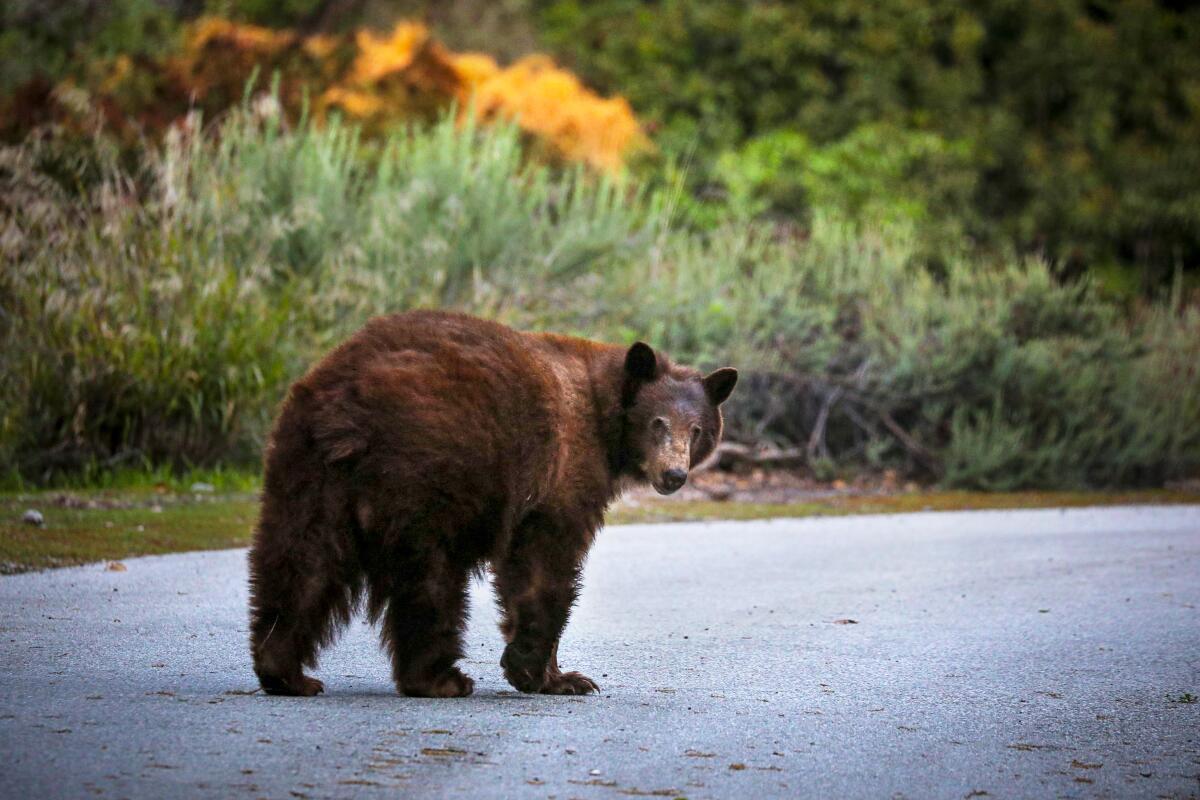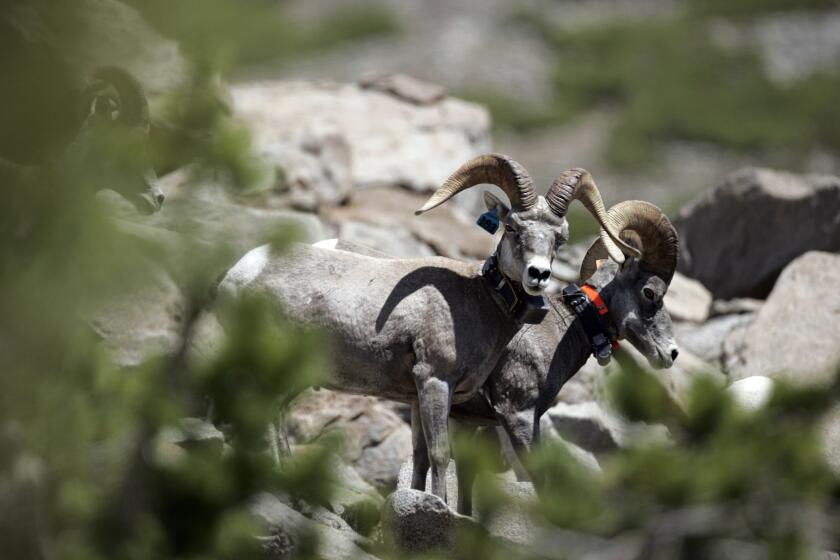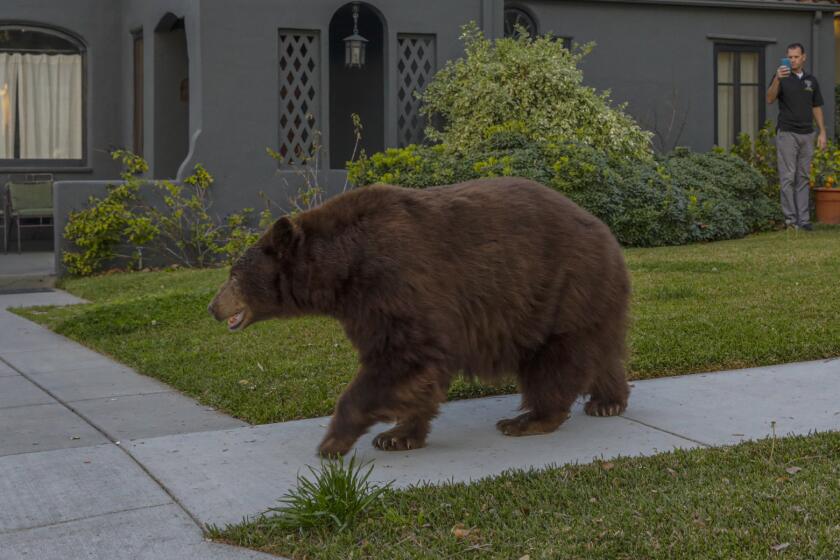Opinion: California’s bears are thriving. Here’s the case for letting hunters kill more of them

- Share via
At a recent riverside gathering, a friend and I served wild-game tacos. Each of our 40 guests got two: one elk, the other black bear.
I have yet to hear from a single person who preferred the elk.
America’s black bear populations are healthy and growing. The International Union for Conservation of Nature considers the species to be of “least concern.” That’s the same conservation status as raccoons and crows.
Yet the hunting of black bears is a perennial tinderbox in wildlife politics. From coast to coast, black bear hunters are often under assault from politicians, animal rights extremists and wildlife management officials who are hostile to hunting. New Jersey Gov. Phil Murphy campaigned partly on his opposition to the state’s black bear hunt and, once elected, went against his own wildlife management agency’s recommendation in ending the practice. (He rescinded the policy after a dramatic rise in bear-human conflicts.)
This endangered California species has survived ice ages, livestock disease and climate change. The greatest threat to it today may be a once-scarce predator.
The California Department of Fish and Wildlife conducts a tightly regulated annual bear hunt with a cap on the total killed as well as prohibitions on wasting bear meat, killing cubs and killing sows accompanied by cubs. Yet politicians and activists have repeatedly tried to strip the agency of its power to authorize hunts without any evidence that they’re detrimental to the bear population. In fact, California’s black bears have thrived amid hunting, and all the evidence suggests the state could significantly expand bear hunting without any negative impact.
The Fish and Wildlife Department issued a draft black bear management plan in April that estimates California’s black bear population to be about 65,000, up from around 20,000 in 1998, when the last such plan was adopted. The dramatic growth in their numbers could justify an expansion of hunting.
The increase is a function of not only more bears but also better counting. The 1998 population estimate was derived from data on hunted black bears. Today, that data set is combined with information from an array of nearly 3,000 cameras distributed throughout California bear habitat.
Many wildlife species in Mammoth Lakes and the Sierra Nevada are finding their favorite foods still buried in snow. More will head into towns in search of alternatives.
Animal rights activists often misrepresent or obfuscate such population data. The number of bears killed by hunters dropped dramatically, for example, after the California Legislature banned the use of dogs to hunt the animals in 2012. A decade later, the Humane Society of the United States petitioned the Department of Fish and Wildlife to issue a moratorium on black bear hunting, citing the drop in hunters’ success rates as alleged evidence of a declining bear population, which it clearly was not.
Yet it’s hunters, not the Humane Society, who help foot the bill for black bear research and management. From 2012 to 2022, black bear hunters paid more than $27 million in licensing fees that funded the salaries of state biologists and game wardens. An excise tax on guns, ammunition and other hunting-related equipment generates an additional $10 million to $30 million annually for the state, much of which went to black bear research and management over the last decade.
Any given California bear is unlikely to be killed by a hunter. Up to almost half of black bears die within their first year of life, most often due to cannibalism, starvation or abandonment. Among mature bears, the leading causes of death are human-related, but thanks to cars and other anthropogenic dangers, this is true even in areas where bear hunting is not allowed.
In the areas of California that are open to hunting, the annual harvest rate — the share of bears killed by hunters — is only about 3% of the population. But black bear populations can handle an annual harvest rate of at least 16% without declining. California could allow each hunter to take two bears instead of the current limit of one, double the cap on total kills to 3,400 and reverse the ban on hunting with dogs and still see no decline in overall bear numbers. The new management plan alludes to this, noting that “protection from hunting may not necessarily result in greater survival and, consequently, population growth.”
California’s first documented fatal black bear attack on a human took place in November. While it was an isolated incident and there’s no reason to think more bear hunting could have prevented it, it was a reminder that all species exist within the context, and often at the expense, of other species.
One study found that a newborn mule deer west of the Sierra Nevada crest is over six times more likely to be killed by a black bear than to die of any other cause. And every time a mountain lion kills a prey animal in the Mendocino National Forest, it has a more than 70% chance of losing it to a black bear. This forces mountain lions to kill more deer and is likely linked to documented declines in that species’ local population.
Such is the eternal interplay between predators and prey, which has had a human dimension for thousands of years in California. Fortunately, rigorous science and proper regulation can help us manage the relationship between hunting and hunted so that it’s sustainable and even helpful to wildlife. In responsibly consuming the surplus of black bears, hunters can fund the means of improving our collective understanding of wildlife, finance habitat protection and other projects to support wildlife, and help employ wardens to protect the animals.
It’s understandable that most Californians will never choose to be hunters. What’s less clear is why more don’t support those who do.
Steven Rinella is a writer and conservationist who hosts “The MeatEater Podcast.”
More to Read
A cure for the common opinion
Get thought-provoking perspectives with our weekly newsletter.
You may occasionally receive promotional content from the Los Angeles Times.












